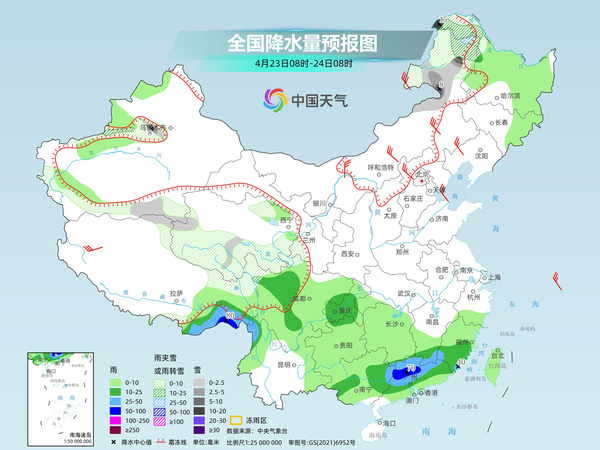On April 21, the reporter learned from the flood control and drought relief command of the Guangxi Zhuang Autonomous Region that at present, the meteorological drought in Guangxi is relatively serious. Monitoring on April 17 showed that Guangxi's meteorological drought area was 97.5%, of which the special drought area was 68.7%.
Hydruff is generally slightly deviated compared with previous years;
Drought conditions have a certain impact on drinking water and agricultural production of humans and animals, and the forest fire risk level is high, and urban water supply in some counties has certain risks;
It is expected that before the end of April, rainfall in Guangxi will mainly occur in northeastern Guizhou, and rainfall in arid areas in various places is not obvious, and meteorological drought will further develop;
The natural water inflow volume of most rivers in Guangxi is generally 30% to 50% less than the same period in previous years, and local mild to moderate hydrological drought in Baise, Chongzuo, Nanning, Laibin, Qinzhou, Beihai and other cities are partially mild to moderate hydrological drought.
The drought in Guangxi continues to develop, and the risk of drinking difficulties in northwest Guangxi and middle Guangxi is high.
According to statistics from the Guangxi Zhuang Autonomous Region Meteorological Bureau, since November 2024, the average precipitation in Guangxi has been 110.0 mm, which is nearly 70% less than the same period in the previous year, the lowest in the same period since 1961. The arid areas are mainly concentrated in the southern part of Guilin and Liuzhou, as well as Hechi, Baise, Hezhou, Laibin, Guigang, Nanning, Wuzhou, Yulin, Qinzhou and other places.
Statistics of the Hydrological Center of Guangxi Zhuang Autonomous Region: Since March 11, the total amount of water in rivers in Guangxi has been 20% less than the same period in previous years;
In early April, Guangxi's reservoirs with irrigation and water supply functions effectively stored 2.92 billion cubic meters of water, accounting for 29.25% of Xingli's storage capacity, 1.574 billion cubic meters less than the same period last year (35.0%), and 1.148 billion cubic meters less than the same period in previous years (28.2%). Some reservoirs are real because they are The total water storage capacity of 21 large reservoirs mainly irrigation was 2.12 billion cubic meters, 30% less than the same period in previous years, and nearly 30% less than the same period last year, and the effective water storage capacity was only 640 million cubic meters; the total water storage capacity of the backbone control reservoirs in the four basin was 15.7 billion cubic meters, basically the same as the same period last year; the total water storage capacity of three reservoirs including Chuanjiang, Xiaorong River, and Fuzikou in the upper reaches of the Guijiang River was 104 million cubic meters, 30% less than the same period last year.
Hydruff is mild to moderate and may continue until after the end of April.
(Reporter Liao Mi of the General Station)



